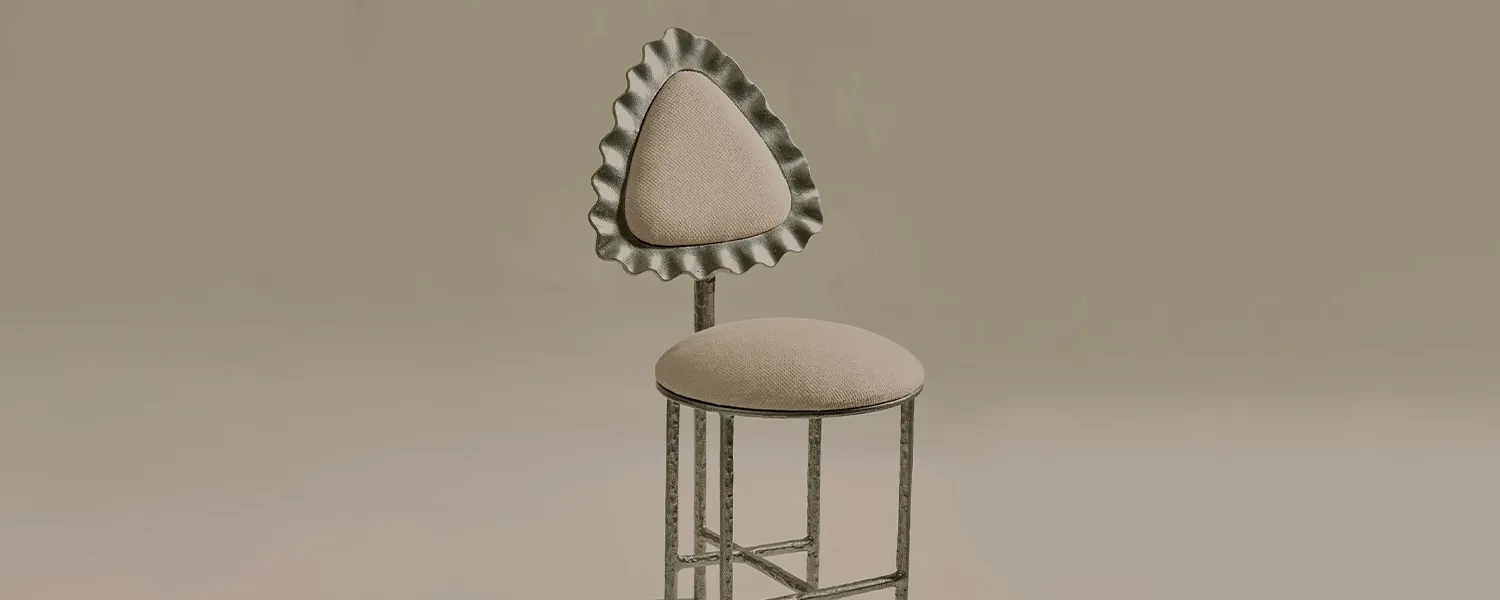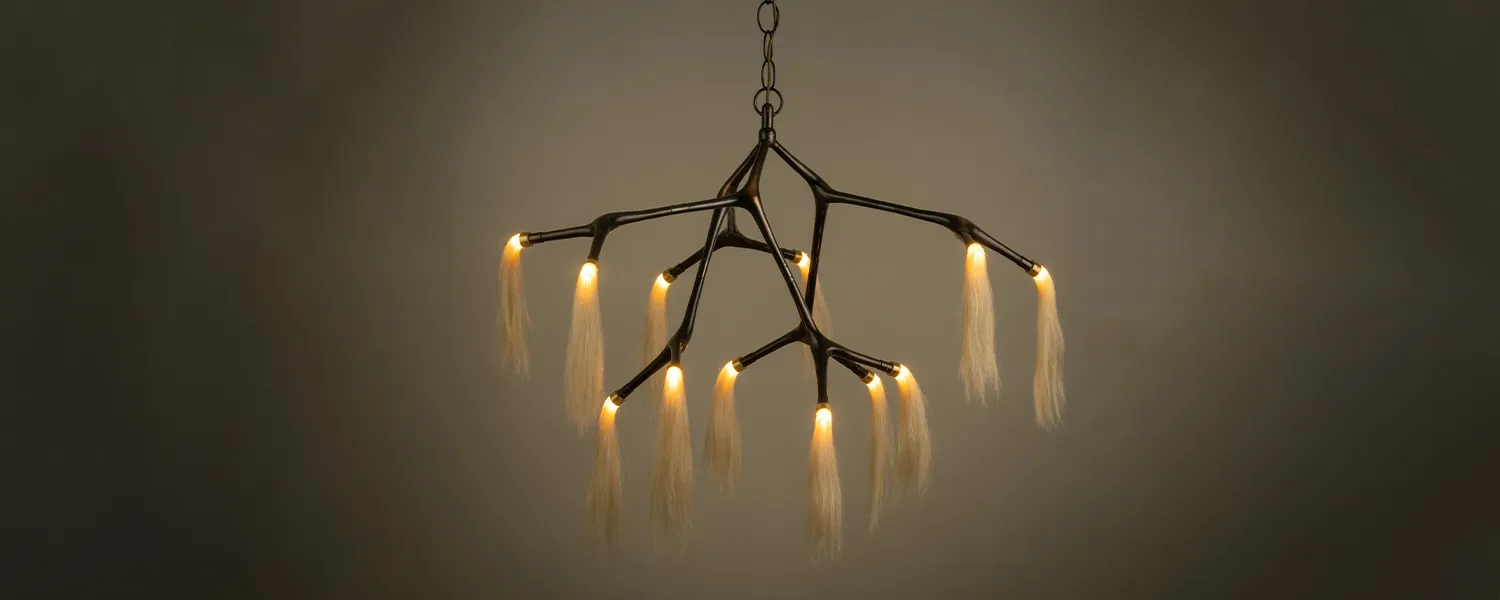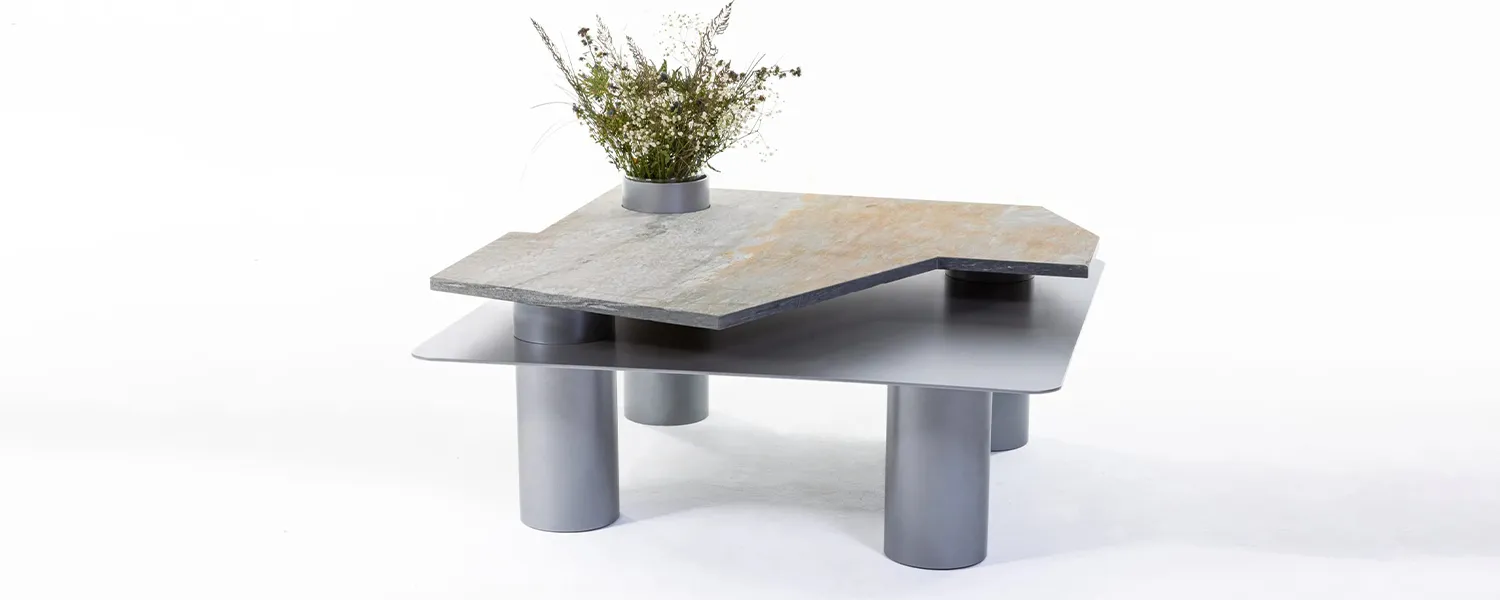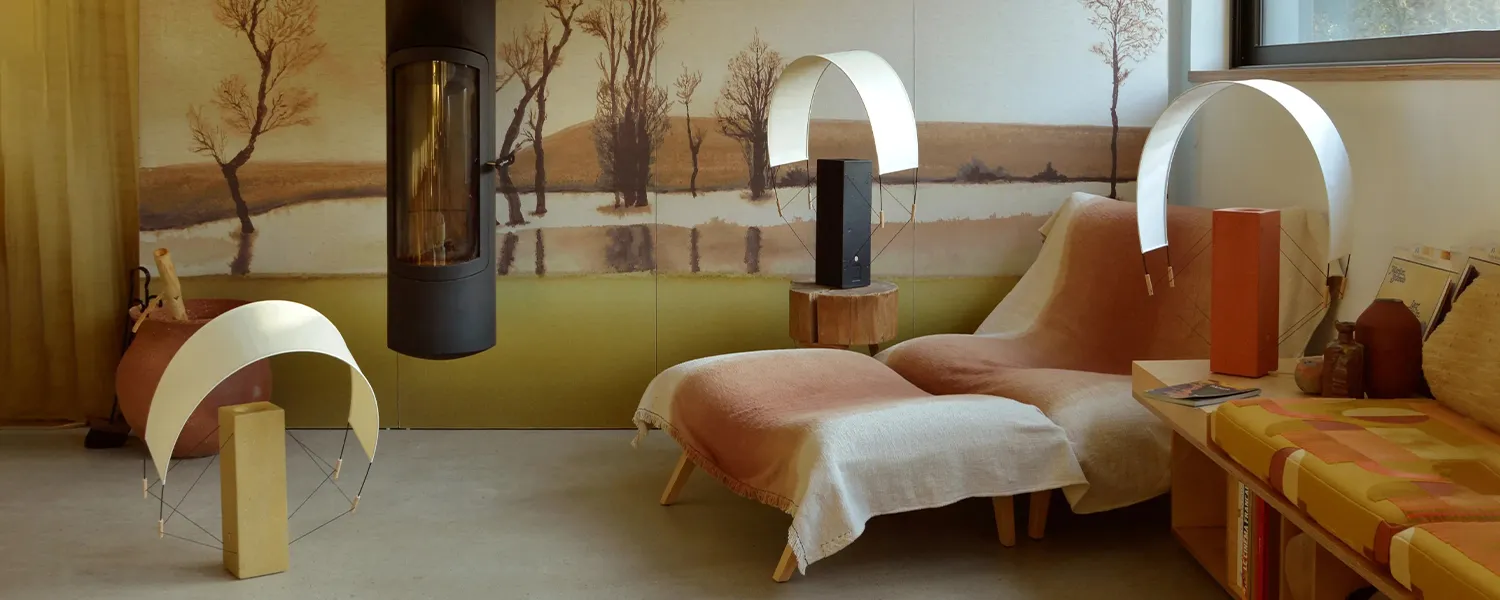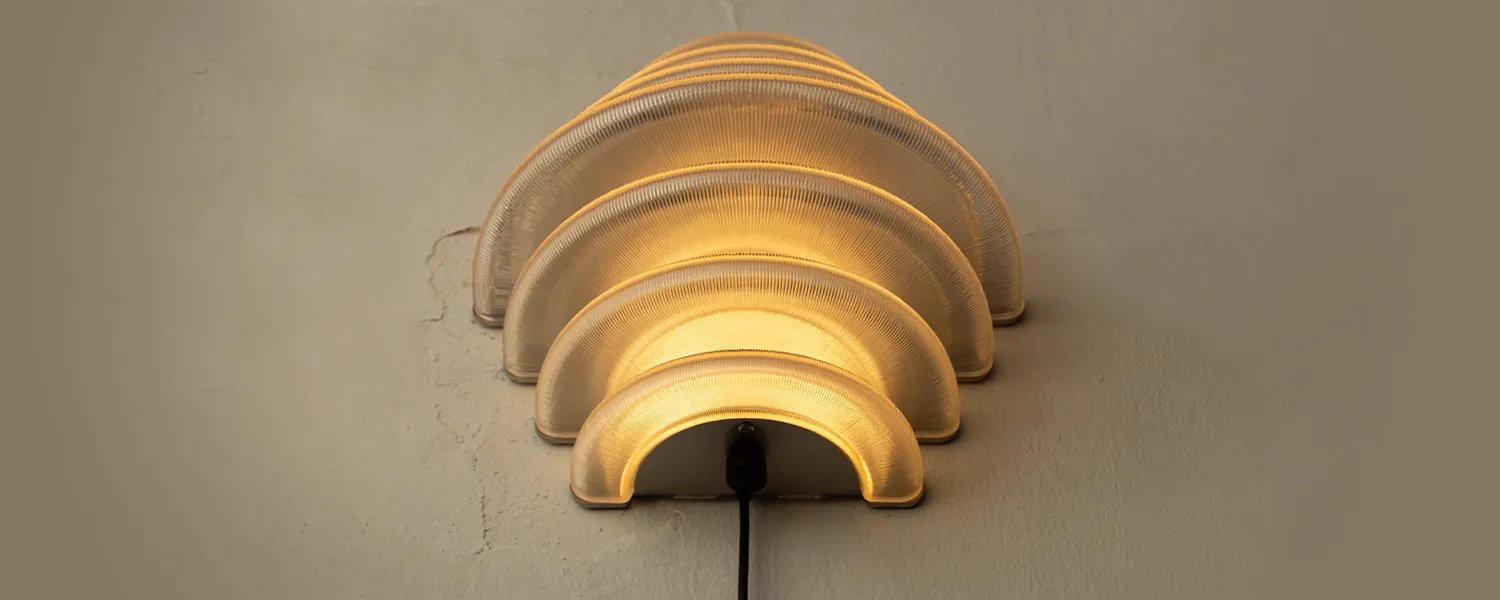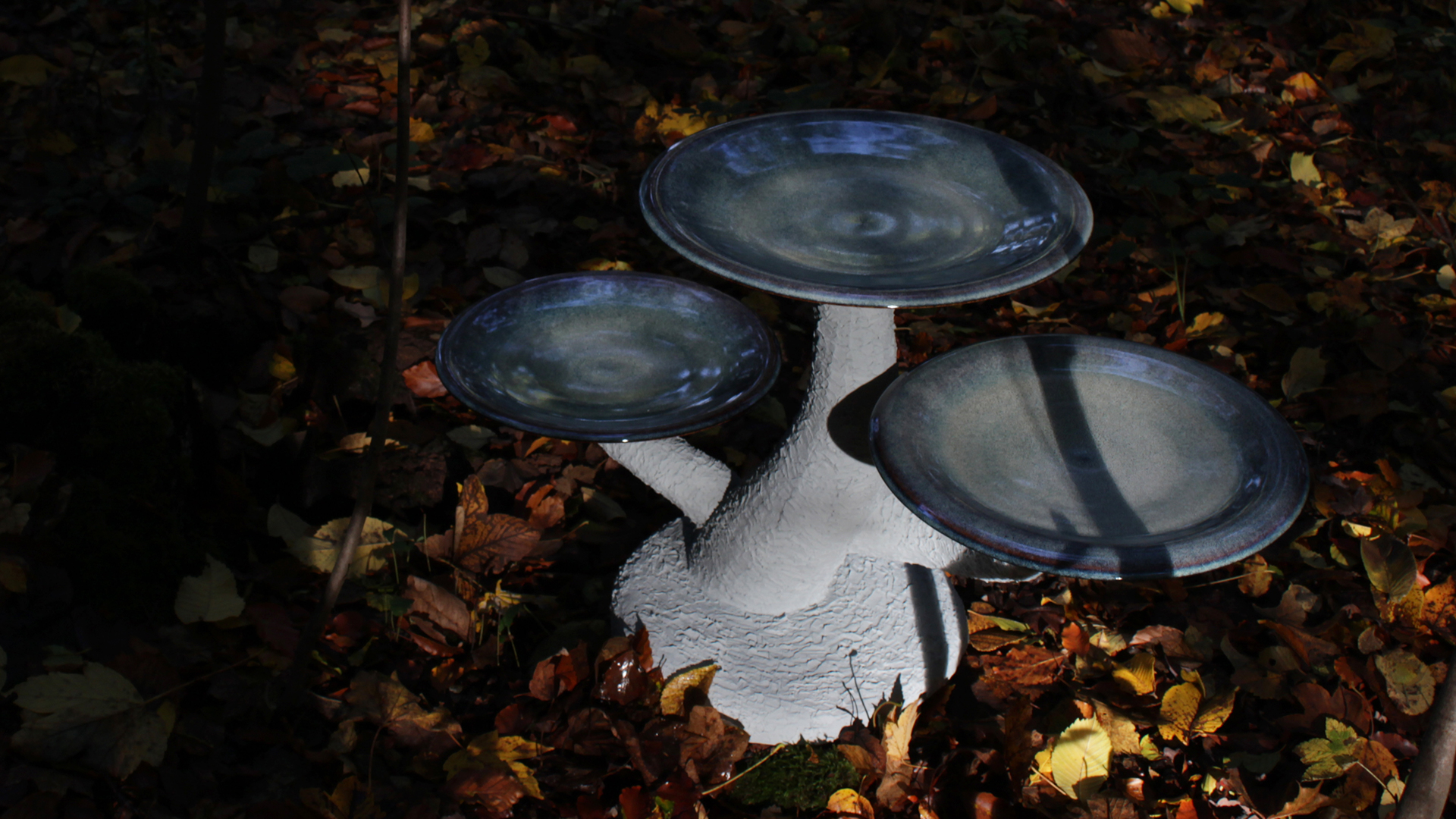
Is this the Surreal Life? The New Normal of Surrealist Design
In 1924, as Europe struggled to process the twin traumas of World War I and the Spanish Flu pandemic, André Breton published his Manifesto of Surrealism, giving voice to a movement that would forever alter our understanding of consciousness and creativity. Now, just over one hundred years later, we find ourselves at another (eerily similar) threshold moment – where reality again feels unmoored, and surrealist design speaks to our collective psyche with renewed urgency.
The movement’s resurgence in contemporary design manifests in objects that seem to exist between reality and dreams: chairs that might walk away at any moment, lamps that appear to melt like Dalí’s famous clocks, and furniture that challenges our understanding of materiality. These pieces are psychological propositions in physical form, suggesting that our understanding of reality itself might be more fluid than we imagine.
We often associate dreams and the dreamworld with a retreat from reality, but it could be argued that that view falls short when it comes to surrealism in 2024. In a world shaped by the odd rhythms of artificial intelligence, climate uncertainty, and perpetual digital flux, surrealist design does not offer escapism but recognition. Perhaps, as we venture beyond surrealism’s centennial, we’re discovering that what once seemed like artistic rebellion has become our most authentic language for describing the world as it is – where the strange has become familiar, and the impossible arrives in our news feeds daily.
What is Surrealism?
At its core, surrealism represents the deliberate unleashing of the unconscious mind – a radical proposition that our deepest truths lie not in rational thought, but in dreams, chance, and unfettered imagination. Though most famously associated with painters like Salvador Dalí and René Magritte, surrealism has proven itself less an artistic movement than a state of (sub)consciousness that slips into every medium and defies containment. Like water finding its level, surrealist principles have permeated every creative discipline they’ve encountered, from Elsa Schiaparelli’s fantastical fashion (currently experiencing a striking and certainly not coincidental resurgence on red carpets and Met Galas) to David Lynch’s unsettling dreamscape cinematography.
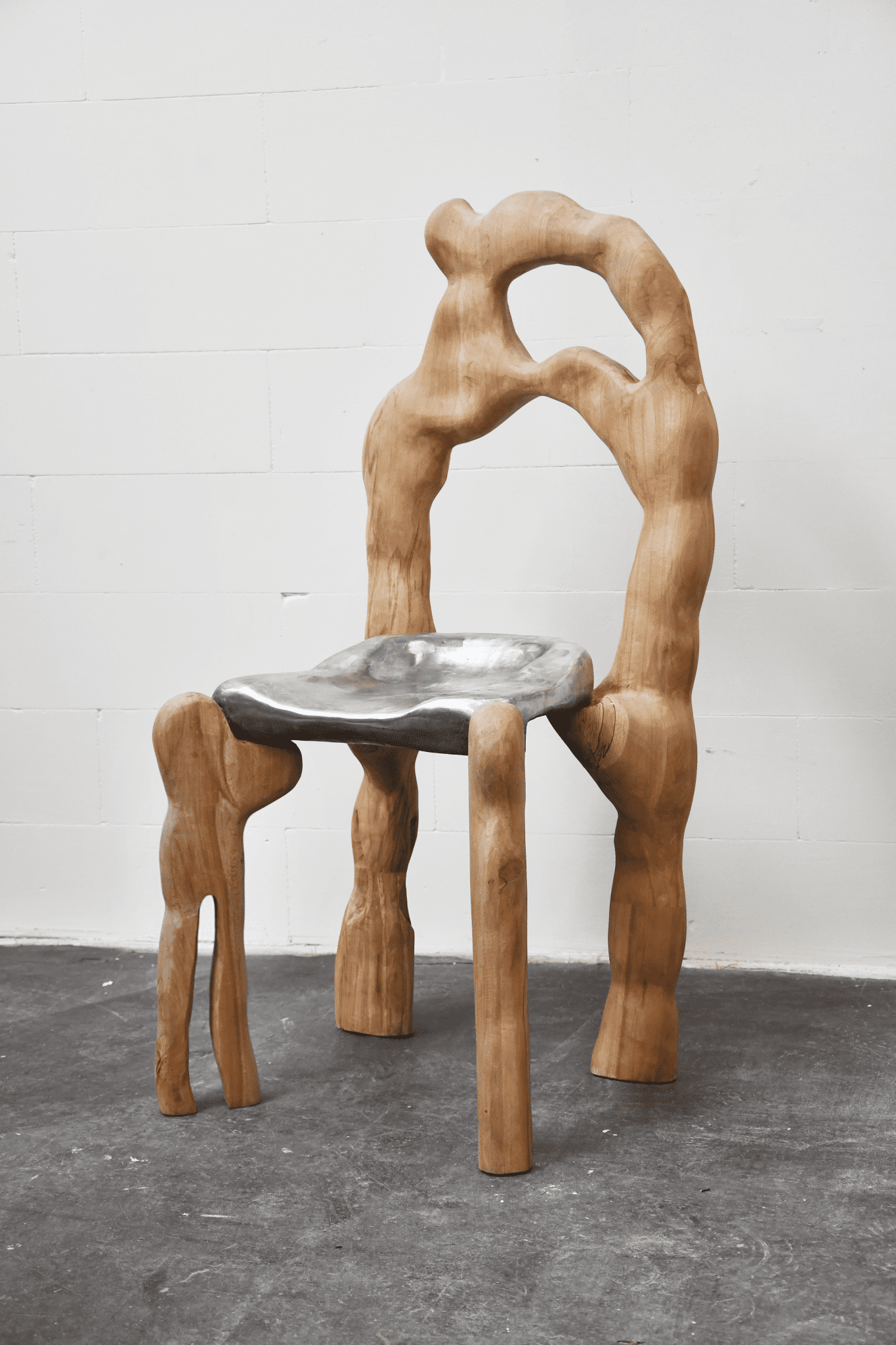

by Sai.E Studio
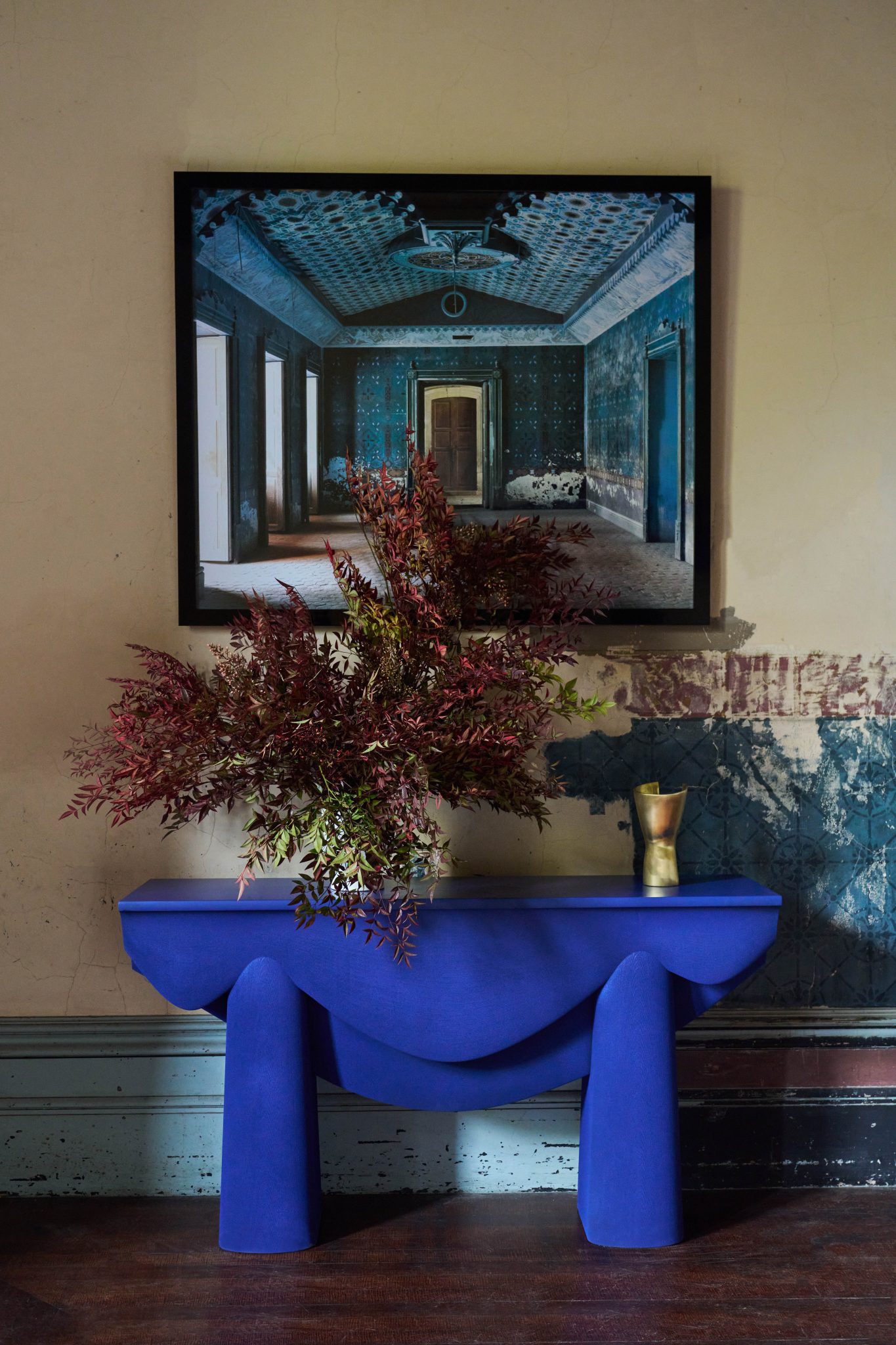

by Studio TOOJ


by TOGIGI


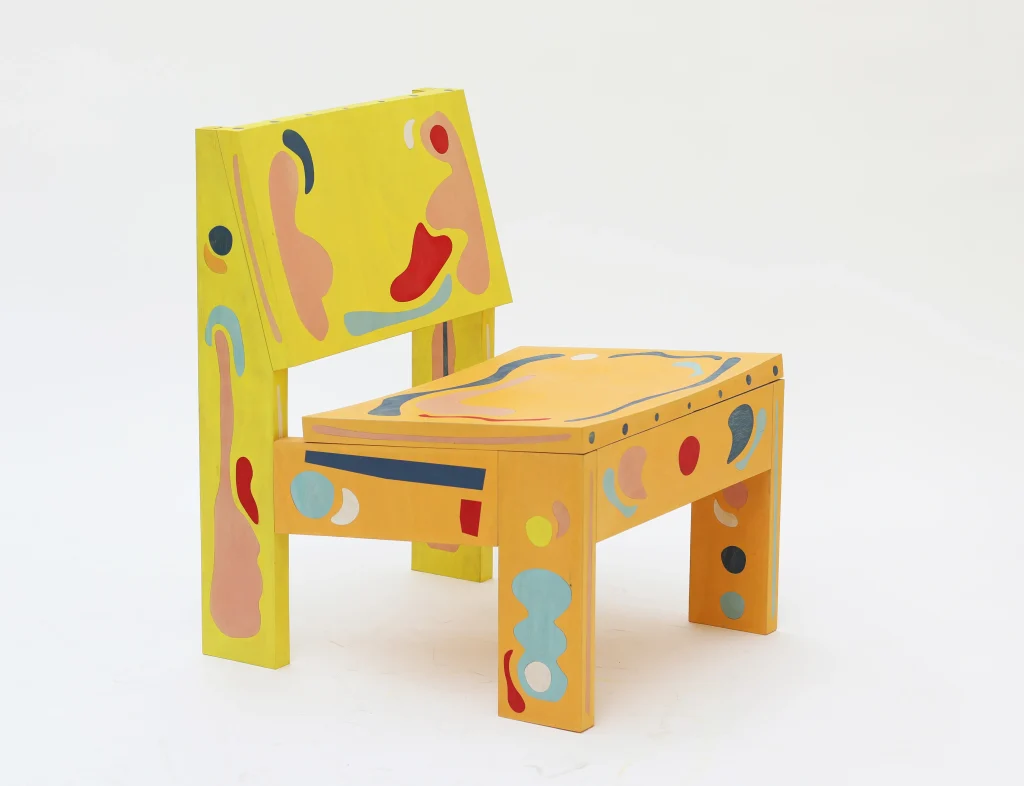

When Reality Outpaces Dreams
The original surrealists responded to a world rendered unrecognizable—industrial warfare had exposed the inadequacy of traditional art to process collective trauma. Today, our news feeds reflect a similar disjointed reality: billionaires launching cars into space, artificial intelligence creating art, and a global pandemic that turned the ordinary into the uncanny. Its surrealism wasn’t loud or dramatic, but unsettling in its quietness—masked interactions, empty streets, and the swift adoption of “the new normal” as though abnormality had always been with us.
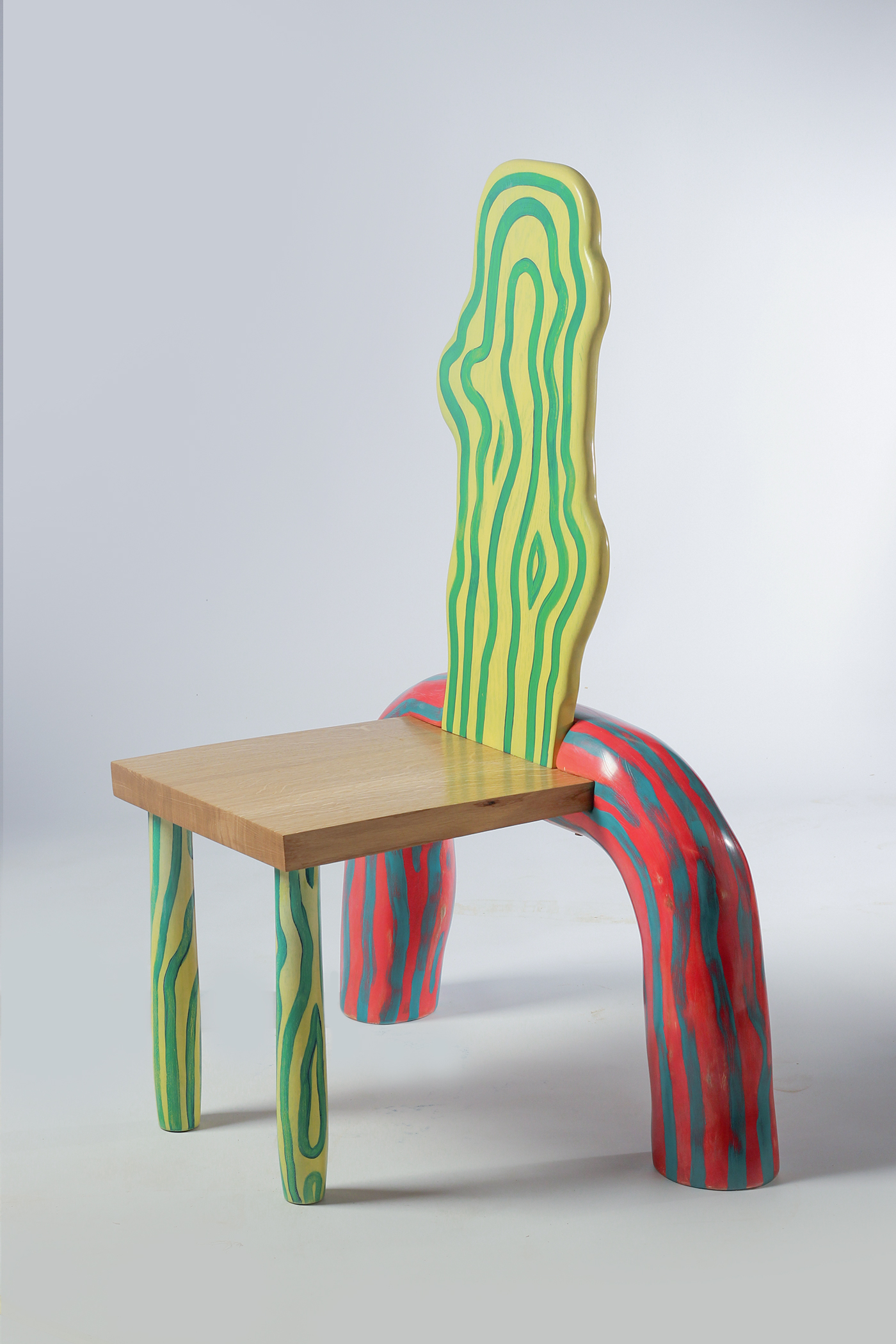

by Benjamin Foucaud
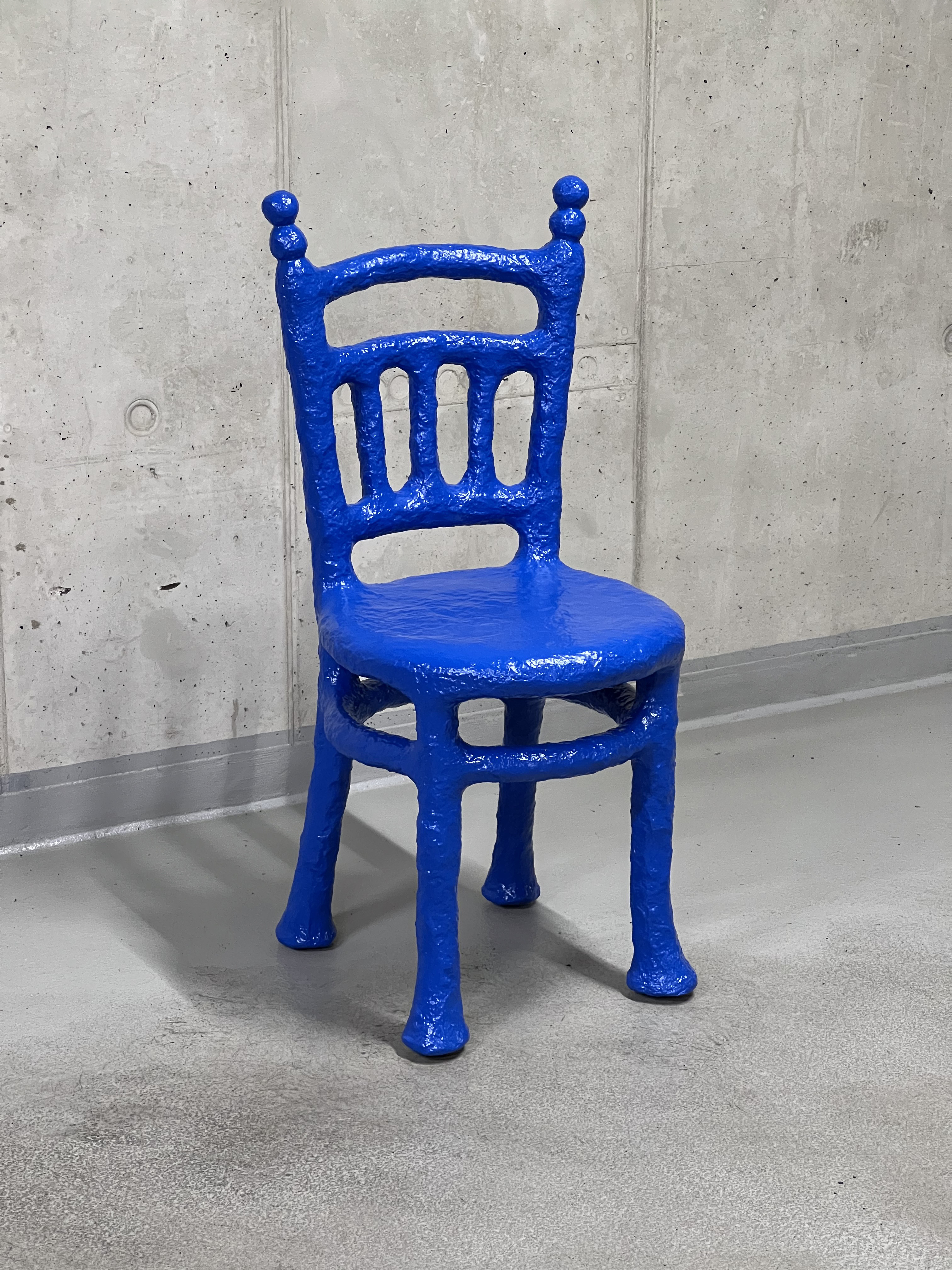

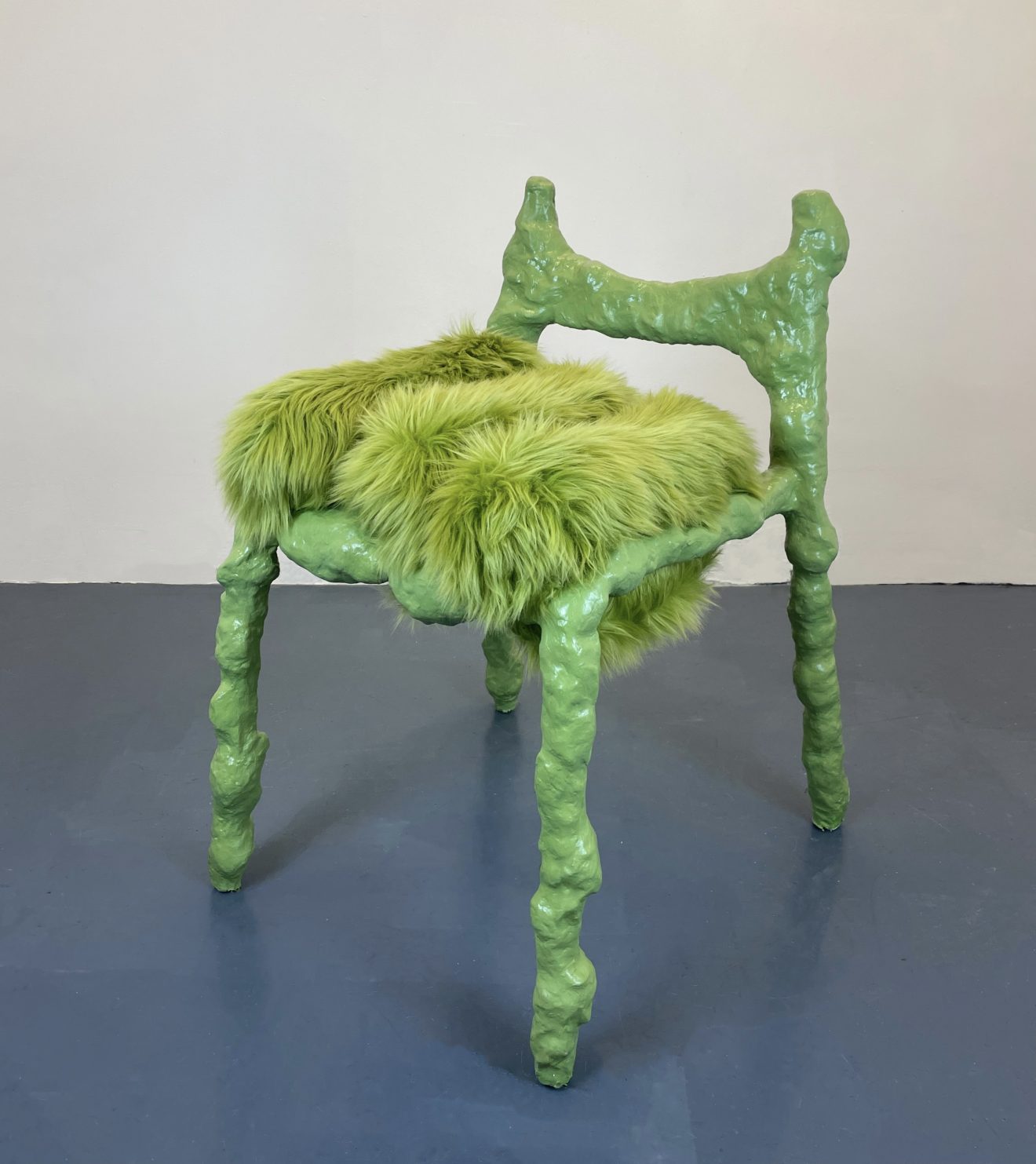

And now, we live in a world where even the simplest interactions seem haunted by uncertainty. With every image, hundreds of Instagram comments echo the same question: “Is this AI?” Our perception of reality grows increasingly precarious, constantly under interrogation. Surrealism thrives in this ambiguity. It mirrors our collective unease—not as escapism, but as a means of grappling with the profound strangeness of our era. When the uncanny becomes commonplace, and the unreal feels more believable than the truth, surrealist design shifts from rebellion to reflection—a mode of recognition in a world that resists explanation.
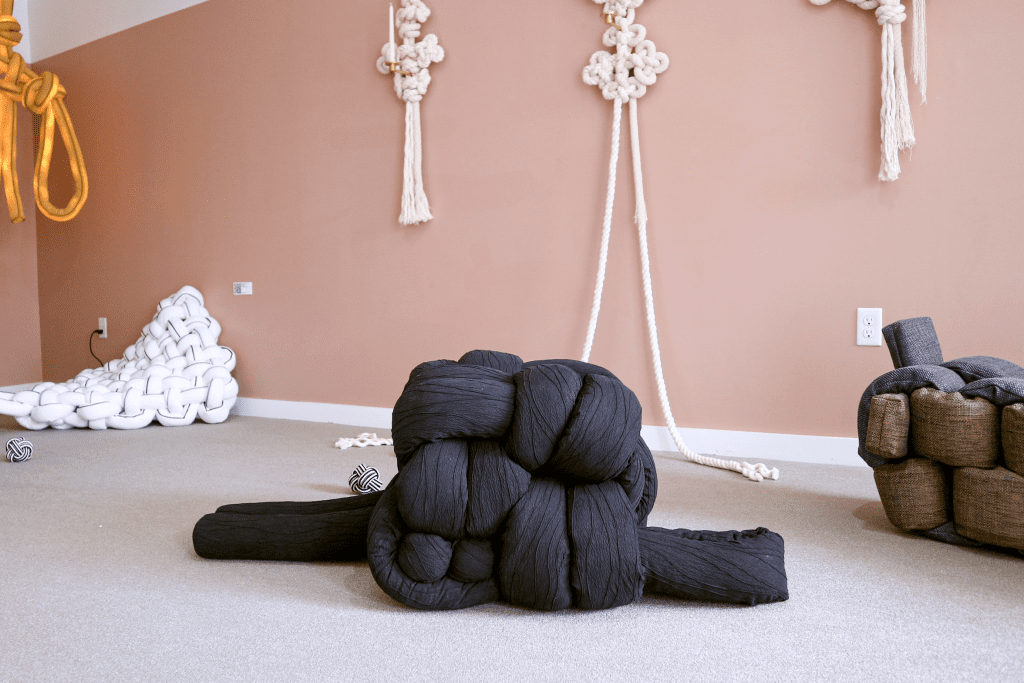

Surrealist Design and the Living Object
In this selection of contemporary surrealist design, each piece seems to harbor a secret life of its own. A dining chair has long blonde hair, while another set of chairs stands ready to walk away on brass feet – will they take their sitters with them?
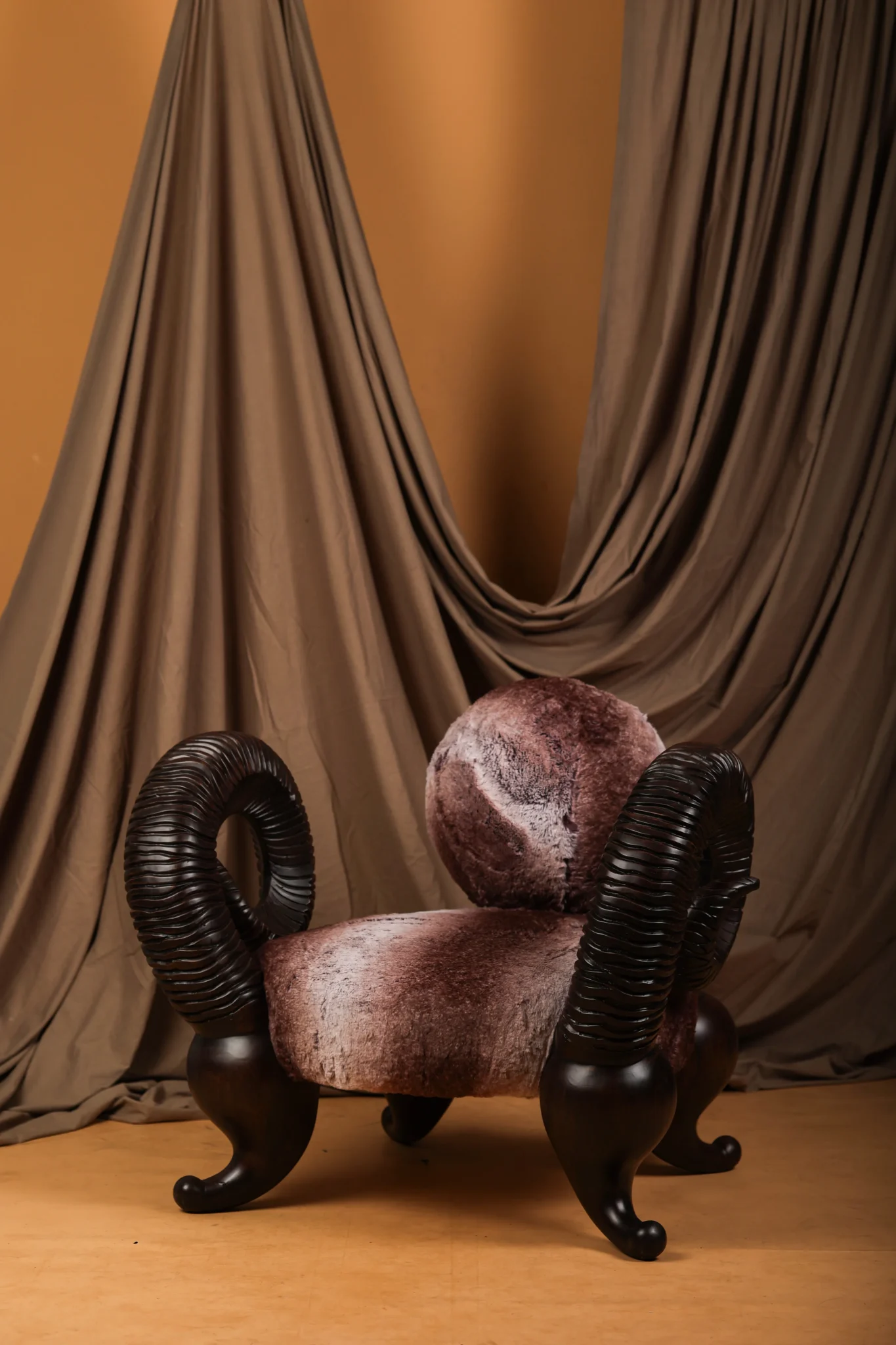

In surrealist design, each piece pulses with an uncanny vitality, suggesting consciousness lurking just beneath the surface of seemingly inanimate forms. Domestic objects take on an unsettling anthropomorphic quality: dining chairs with long blonde hair, while another set appears to watch you, its carved back revealing an unexpected, watchful face. A furry stool seems poised to spring to life and start wandering the room.
A headless floor lamp fashioned from a vintage mannequin torso stands sentinel in silent observation. Organic forms emerge from unexpected places as rose-shaped glass wall lamps bloom, amoebic forms suggesting biological growth in what should be inert material.
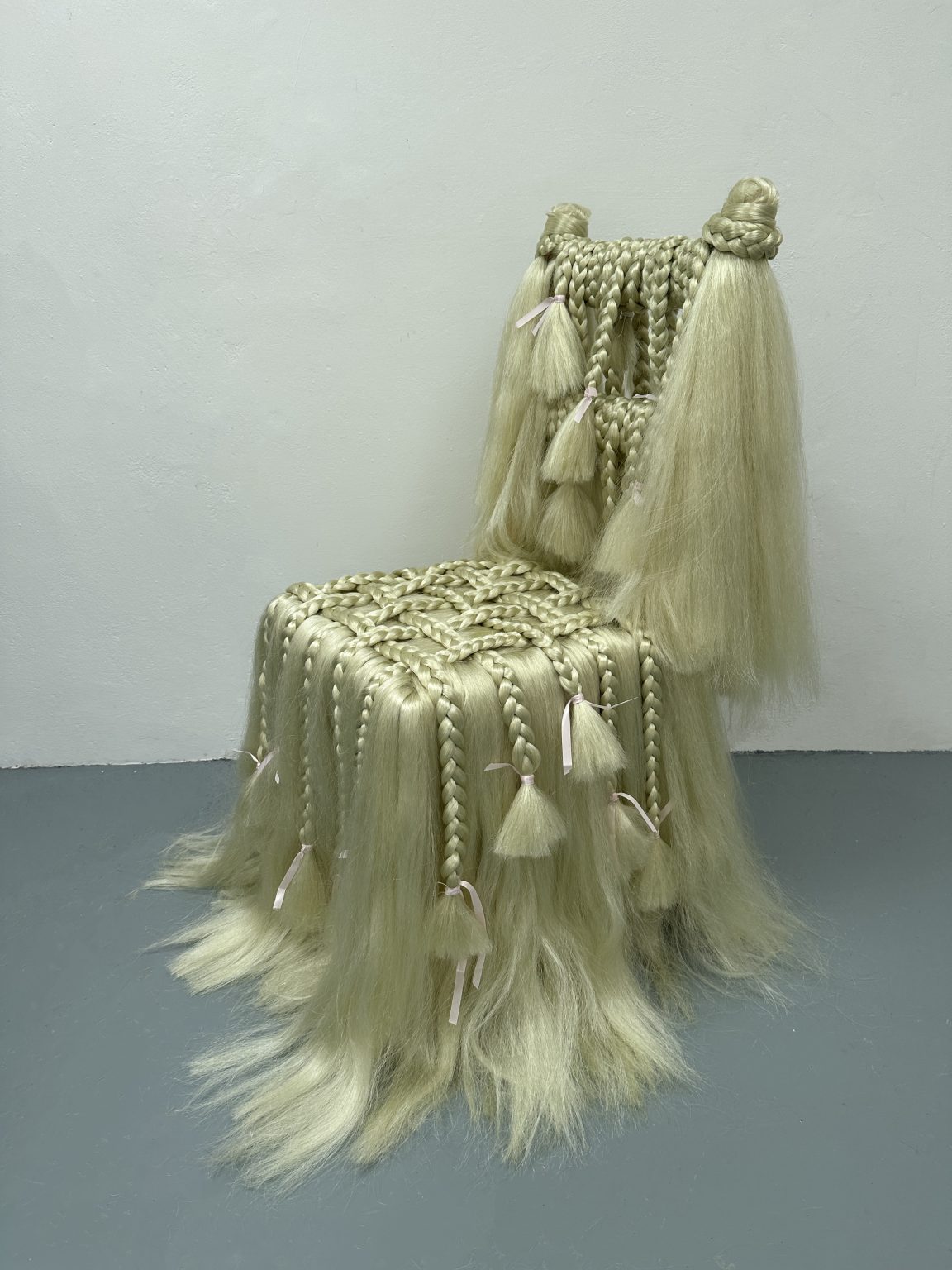



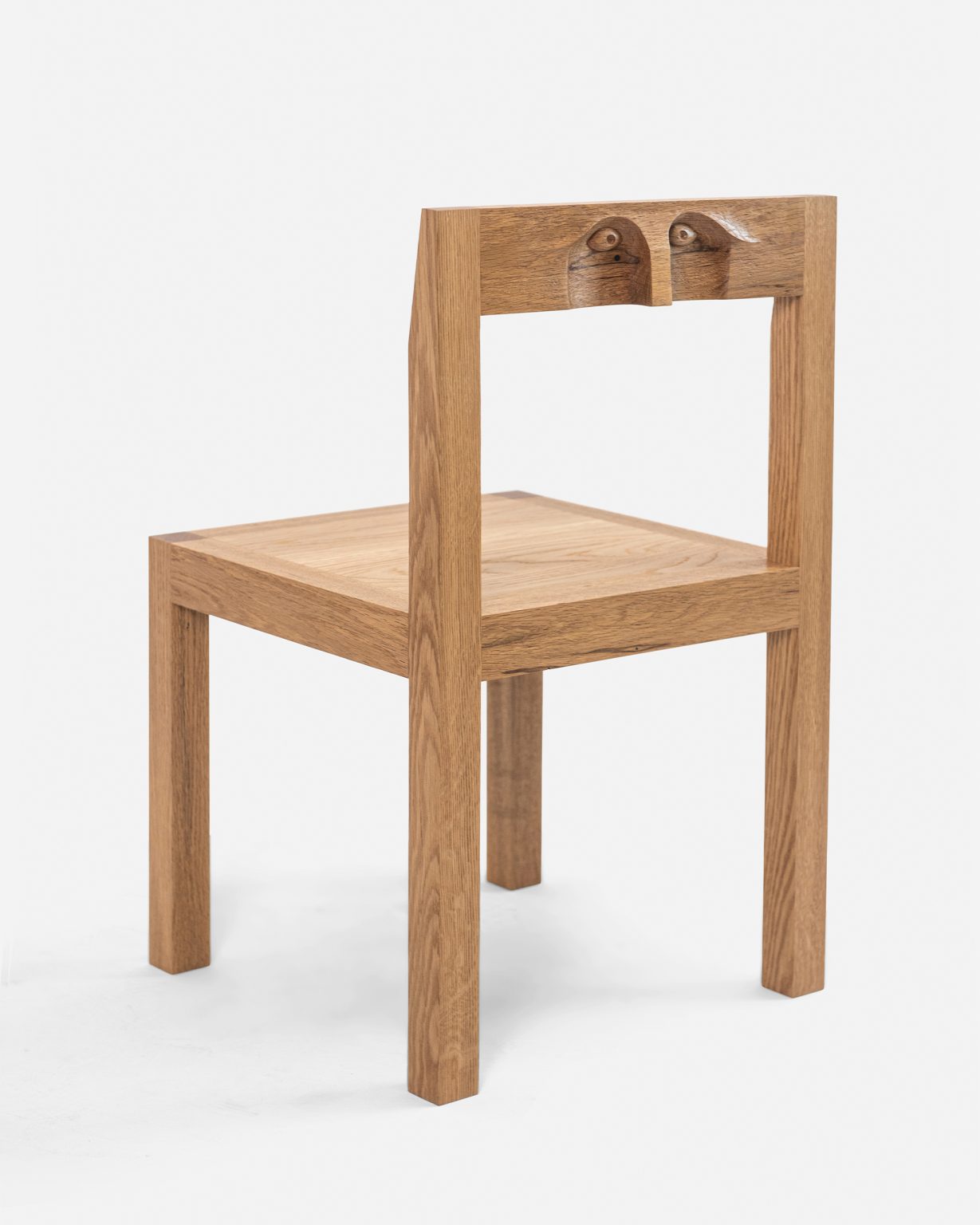

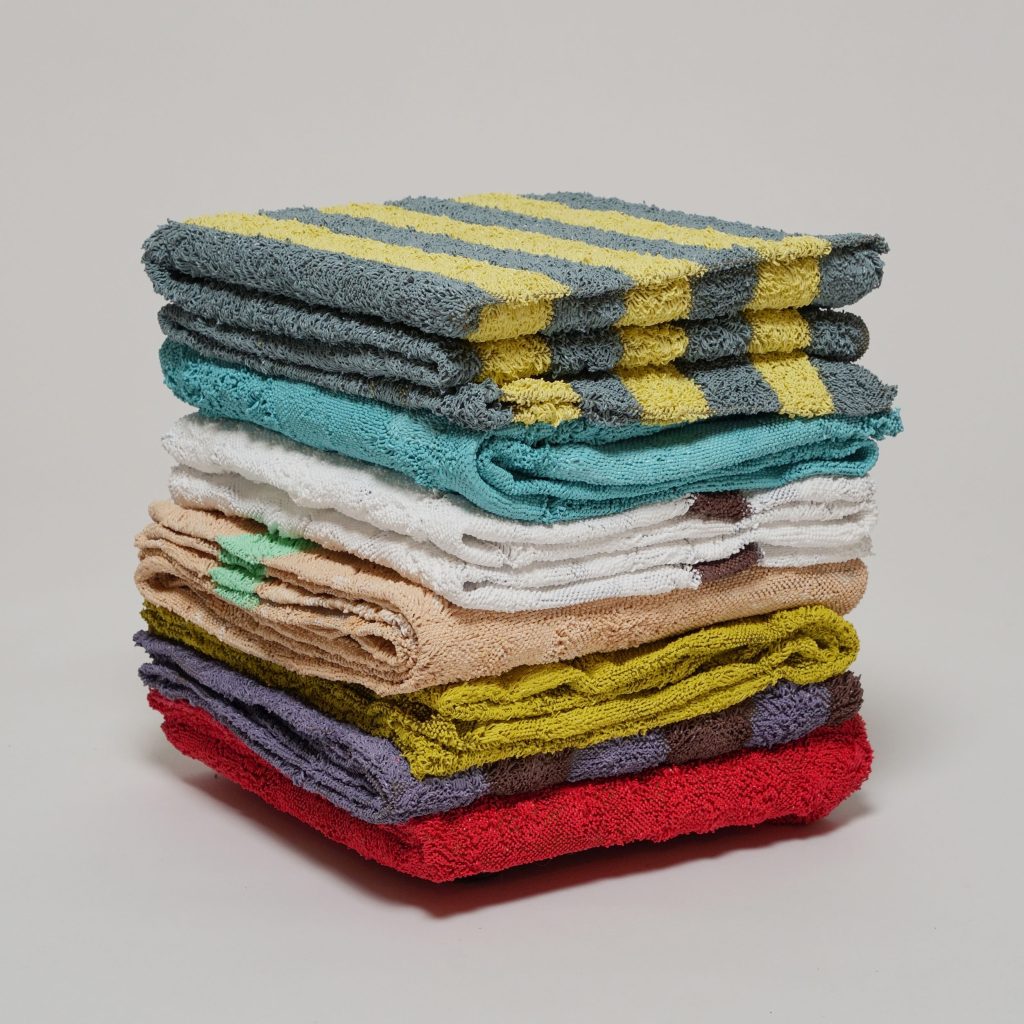

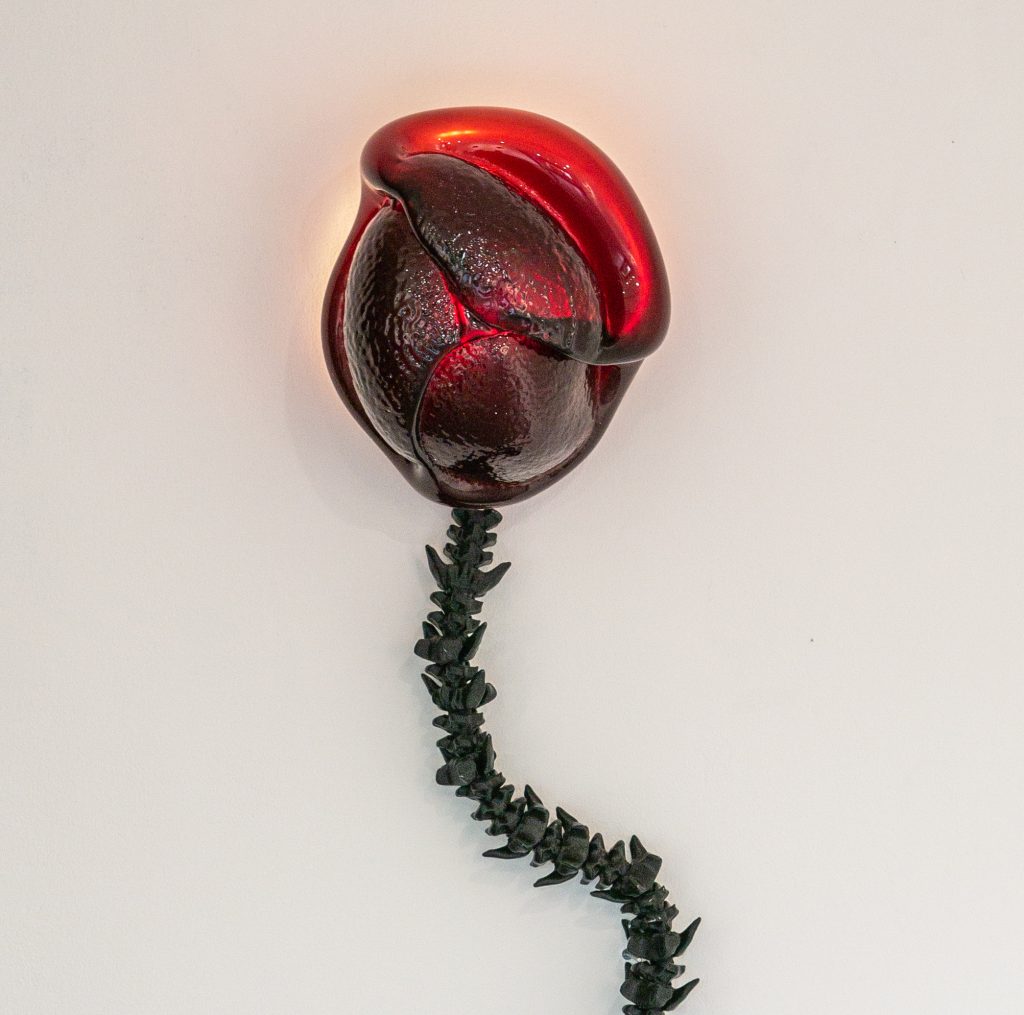

These pieces reference surrealism’s aesthetic vocabulary as well as engage with its core psychological insights. A side table supported by delicate brass hands suggests consciousness in traditionally inanimate objects, while giant chess piece tables transform users into Alice-like figures in a wonderland of shifted scale. As digital devices seem increasingly alive and artificial intelligence generates images that blur the line between real and imagined, furniture that appears sentient feels less like fantasy and more like prophecy.
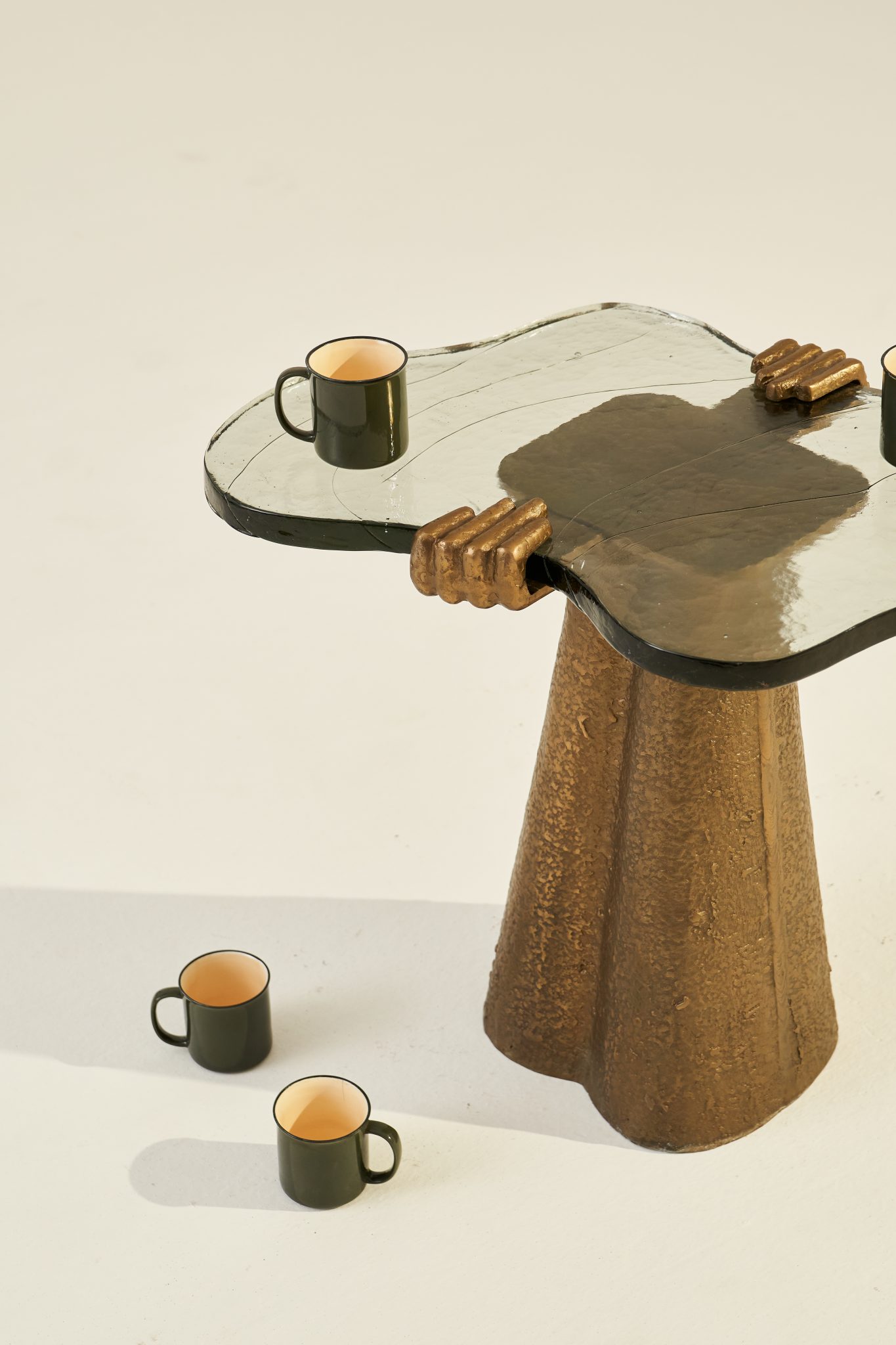

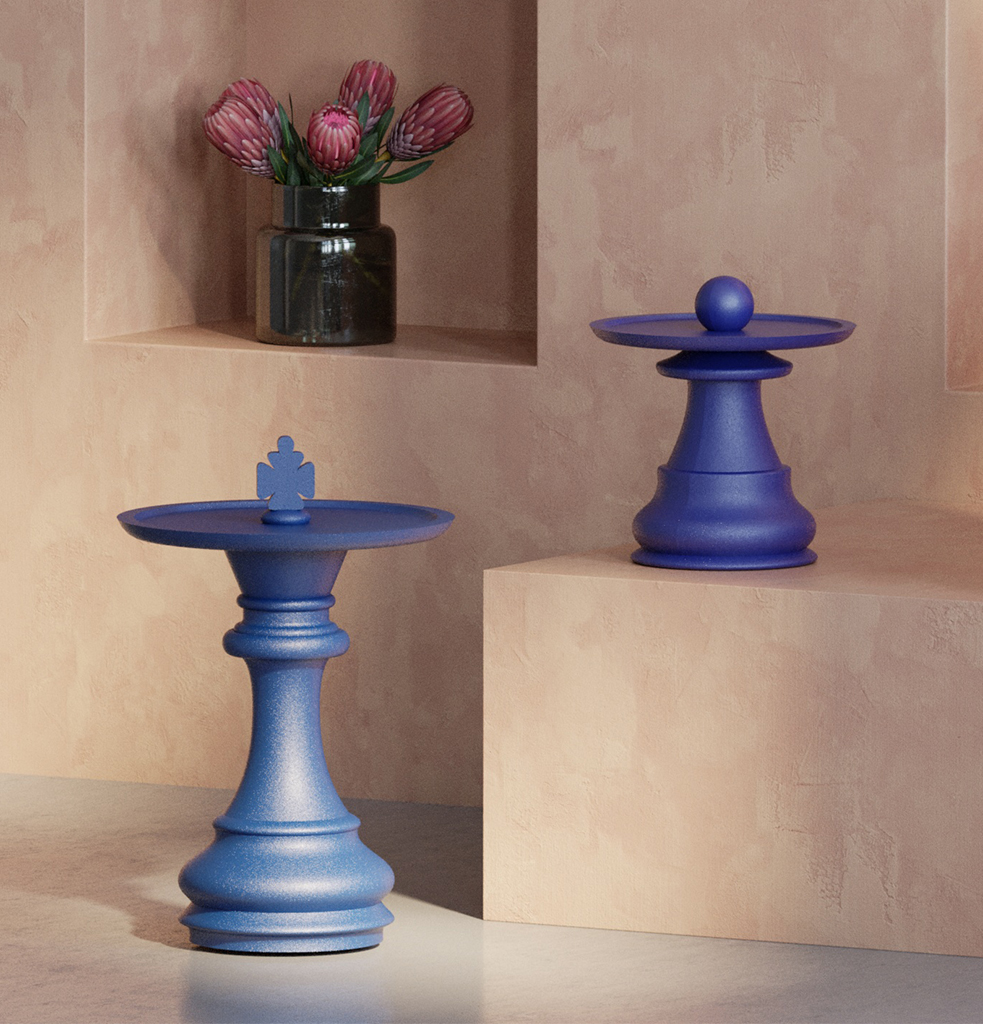

Beyond Aesthetics: Surrealist Design as Cultural Mirror
Wall hangings in this surrealist selection epitomize the movement’s enduring power: abstract forms act as a mirror to the subconscious, much like a Rorschach test—each viewer extracting something different. Perhaps it evokes a mountain peak, a blooming flower, or something deeply personal and unexpected.
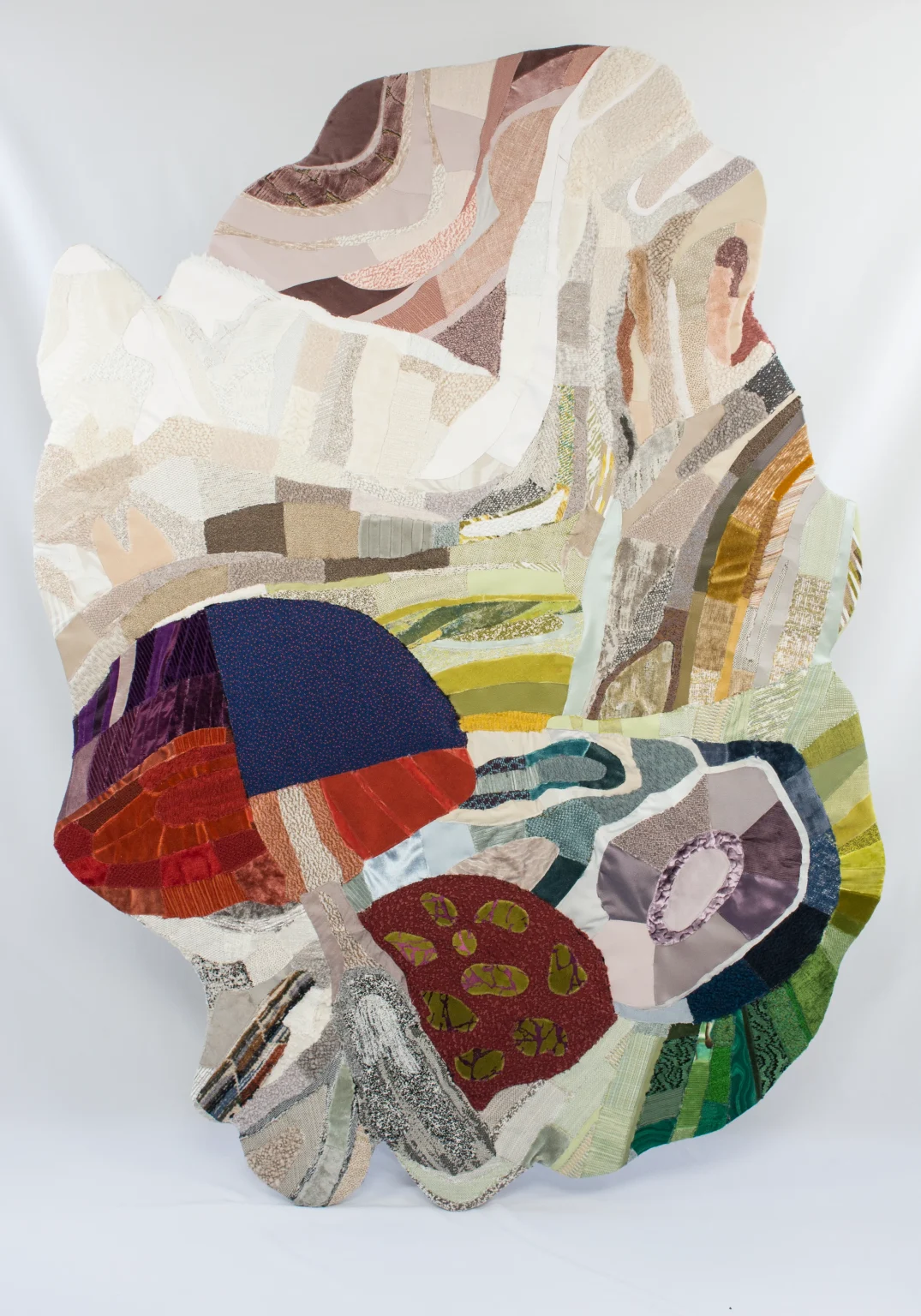

Similarly, glass and metal fixtures appear to melt like frozen moments in time, echoing Dalí’s famous timepieces while speaking to our contemporary experience of temporality. In an age where past and future collapse into an eternal digital present, these liquid-seeming forms provoke a particular kind of cognitive dissonance: materials we know to be rigid and unyielding – ceramics, metals, glass – appear to flow like honey or water.
A stool performs an act of material deception: what appears to be folded beach towels reveals itself as a bronze stool, challenging fundamental assumptions about material truth. These transformations of the immutable into the fluid or animate suggest that even our most solid certainties—or inanimate expectations—might be far more malleable than we imagine.


by TOUCH WITH EYES
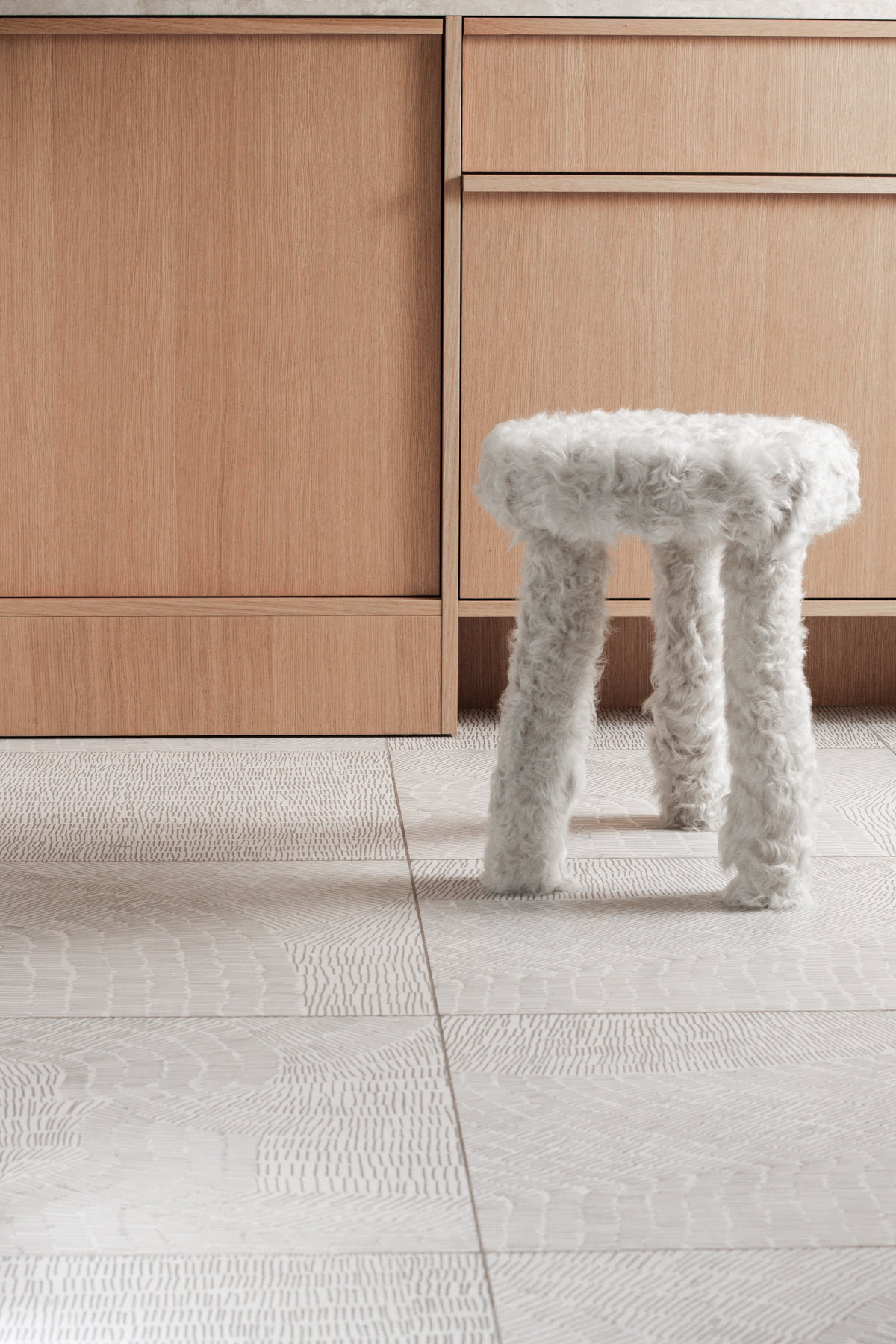

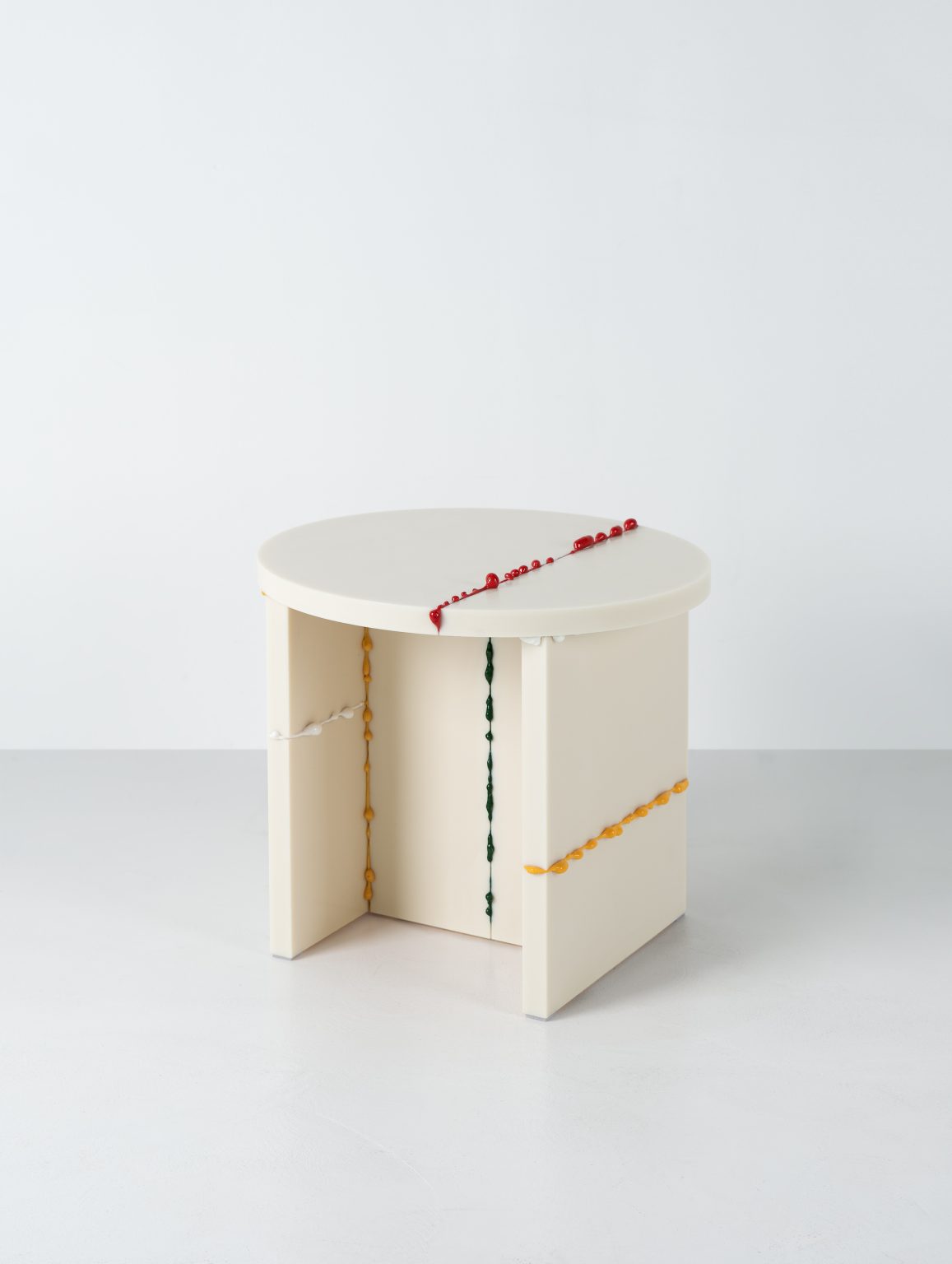

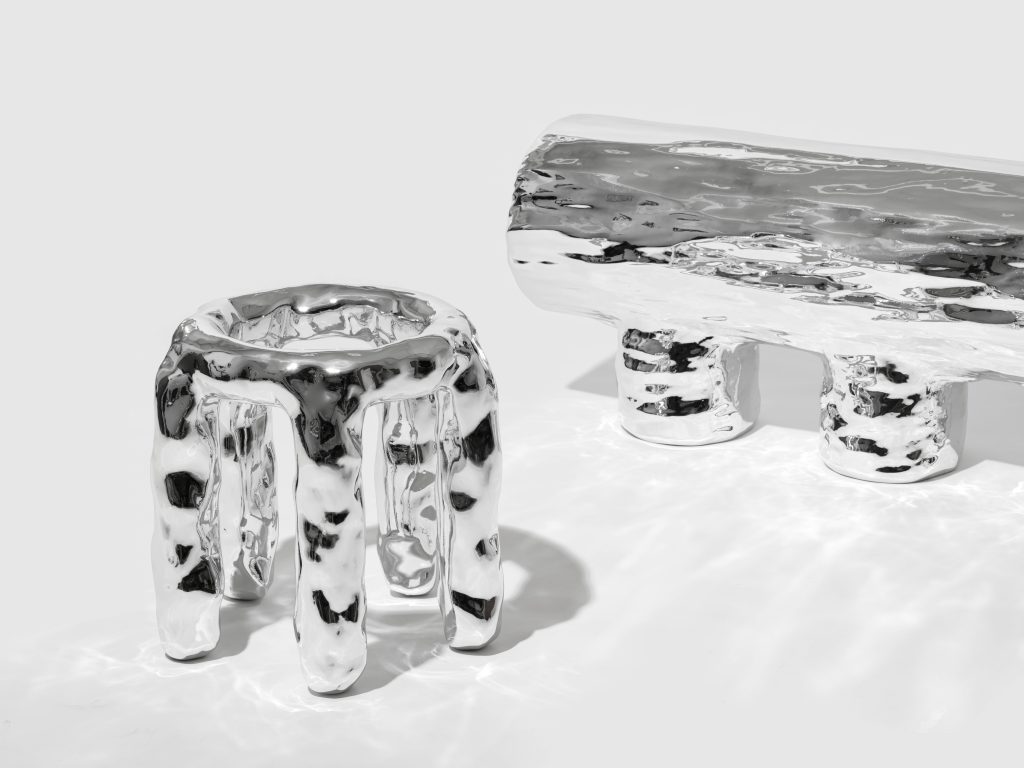

Finally – a hot pink duck side table, perched improbably on stilt-like legs. The designers speak of dreams as their wellspring of inspiration, where chaos and illogic often reveal deeper truths than our waking thoughts. Yet there’s a beautiful duality here: this surreal creature can be analyzed as a commentary on our fractured reality, a window into childhood innocence etc. – but it can also simply exist as what it is: an absurd and delightful pink duck that happens to hold your coffee cup. This dual nature – the potential for both deep meaning and meaningful meaninglessness – speaks to surrealism’s strange power: disarming, but oddly comforting.
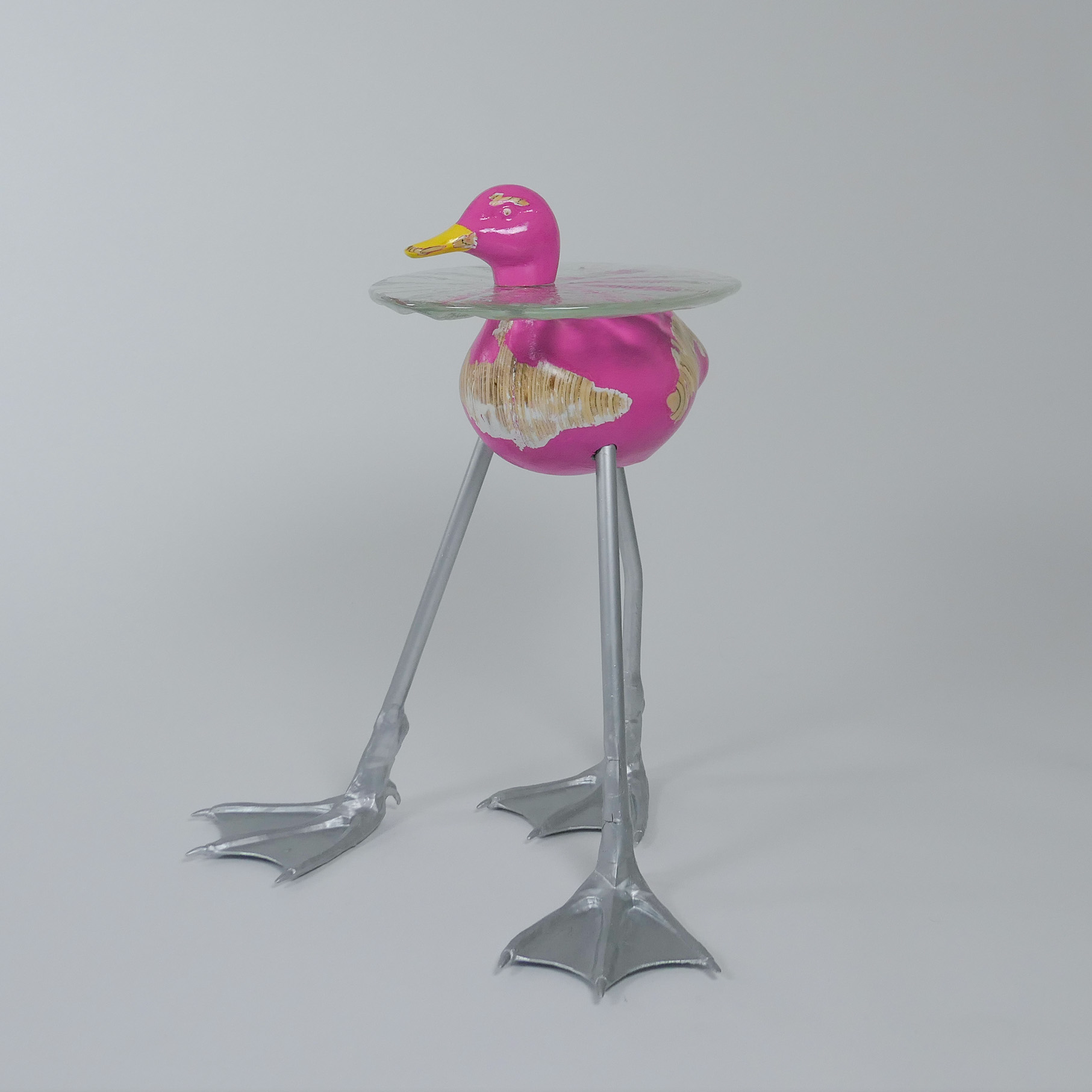

Surrealist Design for an Unreal Reality
One hundred years after surrealism’s birth, we find ourselves inhabiting a world where reality and dreams have become increasingly indistinguishable. The movement that emerged as artistic rebellion now offers us something more profound: a design language uniquely suited to articulate our contemporary experience. In these objects – chairs that sprout hair, lamps that melt, and yes, hot pink duck tables – we discover not an escape from reality, but rather a crystallization of it.
The genius of surrealist design lies in its embrace of ambiguity. While we might excavate deep meaning from a table balanced on tiny brass hands, there’s equal validity in simply delighting in their impossible existence. These pieces invite us to inhabit the space between analysis and wonder, just as we navigate the increasingly blurred boundaries between real and artificial in our daily lives.
A century after Breton’s manifesto, surrealism proves itself not only an artistic movement, but a language for an era that increasingly defies rational explanation. Perhaps this is its most profound gift: the permission to find meaning in meaninglessness, and to recognize that in a world that often feels unreal, the surreal might be our most authentic mode of expression.
-

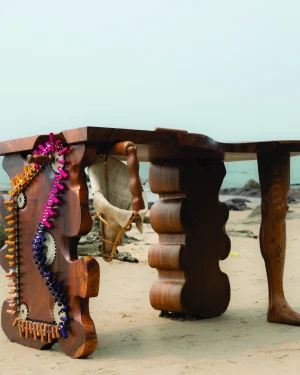 Table On A Walk€16.001 incl. tax
Table On A Walk€16.001 incl. tax -

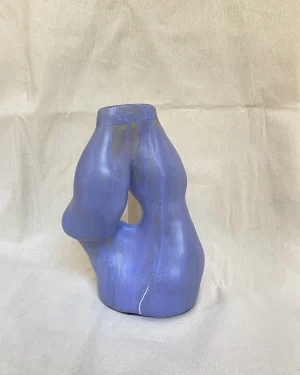 Amorphous No. 2 – Lilac Stoneware Vase€625 incl. tax
Amorphous No. 2 – Lilac Stoneware Vase€625 incl. tax -

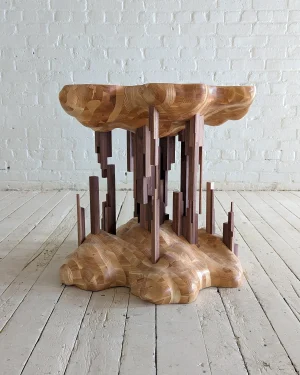 Stelagtable – Sculptural Side Table€5.750 incl. tax
Stelagtable – Sculptural Side Table€5.750 incl. tax -

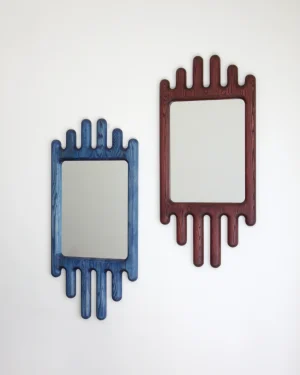 Drip Mirror€831 incl. tax
Drip Mirror€831 incl. tax -

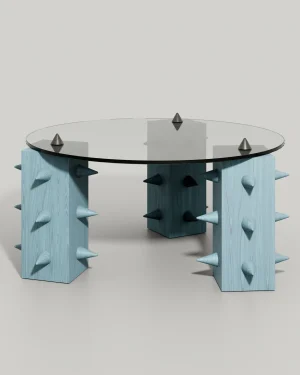 Cena – Sky-Blue Wood and Aluminum Coffee Table€4.625 incl. tax
Cena – Sky-Blue Wood and Aluminum Coffee Table€4.625 incl. tax -

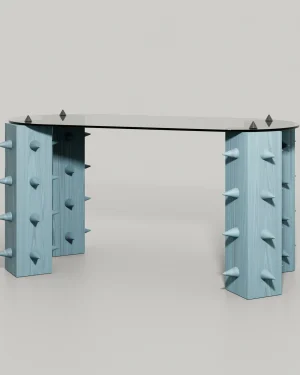 Cena – Sky-blue Wood And Aluminum Desk€8.750 – €8.975 incl. tax
Cena – Sky-blue Wood And Aluminum Desk€8.750 – €8.975 incl. tax

